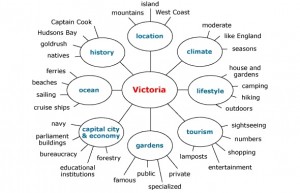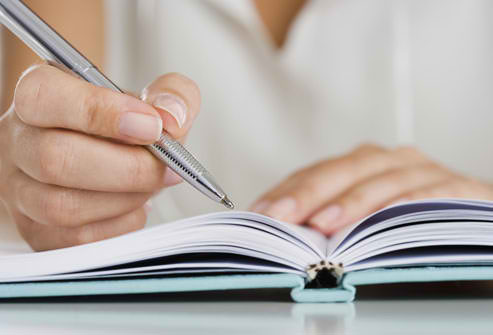Isn’t it tricky that you may feel disoriented or clueless when what you are just facing is a neat, blank paper?
Filling it up with words is not as easy as jumping in a pool and everything that follows is fun and predictable. Writing has become a part of our daily lives, in our relationships, career, community works, and artistic expression. In fact, history is paralyzed without writing. We would never understand ourselves and our surroundings without the recordings of our past.
On the other hand, writing in the fields of science and business means experimenting with the future and laying out a roadmap of events and possibilities. Humans are innately inclined to discovering new things and seeking progress. For those who are in advertising, journalism, or teaching, writing means livelihood. For novelists and poets, writing is who they are. For the rest, writing is a requirement. Everyone can write. Everyone has to write at one point in their lives.
Do not be overwhelmed.
Jean Jacques Rousseau, an 18th-century philosopher and writer, once said, “However great a person’s natural talent may be, the art of writing cannot be learned all at once.” This Guide will serve as your introduction to a series of articles on writing, starting with its most basic form: essay writing.
What is an Essay?
- Definition
- Difference of Essay from Different Types of Paper
Steps of Writing an Essay
- Determine Your Purpose
- Know Your Audience
- Brainstorming Techniques
Basic Structure of an Essay The Role of Research in Writing Writer’s Block and Where to Get Inspiration Stephen King, in his book On Writing: A Memoir of the Craft, wrote “The scariest moment is always just before you start. After that, things can only get better.” So now, let us begin making things better.
What is An Essay? An essay is a piece of writing that focuses on one subject and a particular purpose. In learning institutions, it is assigned to students to develop and test their writing skills, comprehension, and creativity.
An essay is different from a Research Paper, which requires heavy research, strict methodology, and more formal structure, tone, and style. An Essay welcomes a more creative approach, is sometimes composed of personal insights by the author, and requires only outlining and simple paragraph structure.
It is different from a Report, which according to Southampton Solent University, acts as the presentation and analysis of findings from practical research. It begins with an aim (to investigate, to explore) and probably a hypothesis (a proposition that the research will test). Depending on the guidelines or purpose, a report may make recommendations.” Meanwhile, an essay may answer a question and use “results of practical research but only in so far as it may help support the writer’s conclusions.”
An essay is different from a Journal. In one of its writing materials, the RMIT University noted that a journal is mostly about your ideas and insights, reflections on the content of the subject and on your own learning process, and for a school setting, analysis on subjects and issues covered by classwork and/or readings.
Steps on Writing an Essay Determine Your Purpose.
Usually, the purpose springs from the writing assignment or your instructor’s requirements. It should describe the ideal design and content of your essay. According to the University of Canberra, an essay question is typically composed of two elements:
1. Information about the content that you are supposed to cover. For example: Vygotsky’s theories on child development, or systems of governance in Europe
2. One or more verbs, or direction words, that tell you what to do with that content. For example: analyze it, explain it, discuss it, or describe it
The NSW Department of Education and Communities emphasizes the need to study the keywords of the assignment question carefully. Their pointers include: identifying the topic words that ask for the particular subject of an essay, eg the character of Juliet in Shakespeare’s piece; being aware of the limiting words that define the scope of what must be discussed, eg “Chapters 1-3”; and noting the Task Words (or direction words).
Meanwhile, there are essays with no assigned topics or purpose. In a post, the Missouri University of Science and Technology presents the six general types of purposes in writing according to the different parts of Russian linguist Roman Jakobson’s model of the communication situation: writer, reader, context, message, contact, and code:
- Writer: Expressive purposes. One may write simply to express one’s feelings, attitudes, ideas, and so on. This type of writing doesn’t take the reader into consideration; instead, it focuses on the writer’s feelings, experience, and needs. Expressive writing may take the form of poetry, journals, letters, and, especially, free writing. Often, a person will do expressive writing and then be disappointed when readers don’t respond to it.
- Reader: Conative purposes. Conative writing seeks to affect the reader. Persuasive writing is conative; so is writing intended to entertain the reader. Writing intended to arouse the reader’s feelings is conative. Conative writing may take about any form, so long as its intention to persuade the reader or affect the reader emotionally.
- Context: Informative purposes. Informative writing refers to something external to the writing itself, with the purpose of informing the reader. For instance, this page is informative, as are the other components of this Map. In our times, informative writing is usually prose, although in earlier periods poetry was used for informative purposes.
- Message: Poetic purposes. Poetic (or literary or stylistic) purposes focus on the message itself—on its language, on the way the elements of language are used, on structure and pattern both on the level of phrase and of the overall composition. Poetic writing can be in prose as well as in verse. Fiction has poetic purposes. Anytime one writes with an emphasis on the way the language is used, one has a poetic purpose.
- Contact: Phatic purposes. Phatic language (and nonverbal communication) establishes and maintains contacts between speakers or between writer and reader. In speaking, for instance, we may greet someone by saying, “Howya doin?” or Hozit goin?” These questions are not requests for information. They are intended to establish and maintain friendly contact. Phatic purposes are not significant in most writing. The use of greetings and closings in letters is one example of phatic purpose in writing.
- Code: Metalinguistic purposes. Comments on a piece of writing are metalinguistic. If a student attaches a note to an essay to explain why the essay is late, the note is metalinguistic in relation to the essay. An author’s preface to a book is another example of metalinguistic purpose in writing.
Know Your Audience. Dr. Steven Hale, in his article for the Georgia Perimeter College, defined audience as “anyone who reads, sees, or hears a message (a story or essay, a speech, a painting, and so on).” He explained that there are two types of audience:
- The Real Audience – people who read or take the message, such as the teacher, a friend, or a tutor in the writing lab for an essay
- The Intended Audience – the target group that the message sender has in mind, such as the young, middle-aged, or old; male or female; politicians or voters; African-Americans or European-Americans or South Americans.
Hale points out that knowing your audience means deciding on what your writing strategy would be. If your audience belongs to a formal group (for example, a group of professors), your tone of writing should not be casual. If the audience is composed of creative individuals, you can apply a freestyle or conversational approach.
Apply an Invention or Inquiry Strategy. Rise B. Axelrod and Charles R. Cooper, authors of the St. Martin’s The Guide to Writing, explained that invention and inquiry strategies (also known as heuristics) are helpful because they are tools to building a framework for an essay and can be used in almost all writing situations. These strategies can help one explore, study, and scrutinize a topic.
The first category of these strategies is called Mapping. Mapping refers to visual techniques, particularly maps. These maps are graphic displays with words and phrases circled and connected by lines to show relationships, or they might be formal sentence outlines, according to Axelrod and Cooper. Among the mapping strategies are Clustering, Listing, and Outlining.
Clustering explores the possible connections of facts and ideas and requires a tentative division of the topic into subparts or main ideas. Here are the steps:
- In a word or phrase, write your topic in the center of a piece of paper. Circle it.
- Also in words or phrases, write down the main parts or central ideas of your topic. Circle these, and connect them with lines to the topic in the center.
- Next, think of facts, details, examples, or ideas related in any way to these main parts. Cluster these around the main parts.
Here is an example (the subject is Victoria:
Listing works by creating a title for the list that conveys your main idea or topic. You are encouraged to write as fast as you can , include anything that appears useful. Axelrod and Cooper said that “after you have finished, or even as you write, reflect on the list and organize it in the following way:
- Put an asterisk next to the most promising items
- Number key items in order of importance
- Put items in related groups
- Cross out items that do not seem promising.
- Add new items.”
Outlining is determining where your essay’s strengths and weaknesses lie. The two types of outlining are: 1) Informal Scratch Outlining – A scratch outline is informal in style because it is similar to listing the essay’s main points. Here is a sample outline for an argumentative essay:
- Presentation of the Issue
- Concession of some aspect of an opposing position
- Thesis statement
- First reason with support
- Second reason with support (etc)
- Conclusion
2) Topic/Sentence Outlining – This observes a conventional format of numbered and lettered headings and subheadings. Although both are formal, they have differences:
Topic Outline
I. Main topic
A. Subtopic of I
B. Another Subtopic of I
1. Subtopic of 1.B
2. (and so on)
C. Another Subtopic of I
1. Subtopic of I.C
Sentence Outline
I. Highly organized competitive sports such as Peewee Football and Little League Baseball can be physically and psychologically harmful to children, as well as counterproductive for developing future players.
A. Physically harmful because sports entice children into physical actions that are bad for growing bodies.
1. Koppett claims throwing a curve ball may put abnormal strain on developing arm and shoulder muscles.
2. (and so on)
The second category of Invention and Inquiry strategies is simply called Writing. This style is about making complete statements that may help you “explore ideas and define relationships, bring ideas together or show how they differ, and identify causes and effects.” Among the Writing techniques are Cubing, Dialoguing, Dramatizing, Keeping a Journal, Looping, Questioning and Quick Drafting.
Cubing, according to the North Central University Writing Center, is about approaching “each subject or topic as a six-sided cube, with each of the six perspectives offering a different point of view.” Here is a version of the Six Sides of Cubing:
- Describe it: How can the topic or issue be described?
- Compare it: What is the topic or issue similar to or different from?
- Associate it: What does it make one think of? What can be related it to? How can the topic or issue be connected or related to other topics or issues?
- Analyze it: How can the topic or issue be separated or broken down into smaller parts?
- Apply it: How does the topic or issue help one to understand or define other topics or issues?
- Argue for or against it: How could one be for this or against this? This works or doesn’t work because?
Dialoguing refers to the conversation between two or more people, according to authors Axelrod and Cooper. The steps in performing this exercise are: write a conversation between two people (Speaker A and Speaker B); if one stops, the other may ask another speaker to ask the other a question; and present brief responses to keep the conversation moving fast. This technique is actually useful when one is coming up with personal experience and persuasive essays.
Dramatizing, a method developed by the philosopher Kenneth Burke, usually revolves on thinking about human behavior in dramatic terms. In their book, Axelrod and Cooper illustrate the five-pointed star that helps in applying the dramatism approach:
Action. An action is anything that happens, has happened, will happen or could happen. The examples are physical (running a marathon), mental (a book you have read), and emotional (falling in love).
Actor. The actor is involved in the action–either responsible for it or simply affected by it. It may also come in the form of force, something that causes an action.
Setting. The setting is the situation or background of the action. This may be the place and time of an event as well as the historical background of an event or the childhood of a person.
Motive. This refers to the purpose or reason for an action–the actor’s intention.
Method. This demonstrates how an action takes place, including the techniques an actor uses.
Keeping a Journal. Among the famous writers who successfully kept substantive journals were Sylvia Plath, Franz Kafka, Joan Didion, and CS Lewis. Here are things, according to Axelrod and Cooper, that you can do with a journal:
- Keep a list of new words and concepts you learn in your courses.
- Make reflections, reactions or evaluations about the things you read.
- Recall the main ideas you have learned from assigned readings and about the relationship of these new ideas to other ideas in the course.
- Record observations and overheard conversations.
- Write for ten or fifteen minutes every day about whatever is on your mind.
- Write sketches of people who catch your attention.
- Talk about your goals and priorities or list specific things to accomplish and what you plan to do.
- Keep a log over several days or weeks about a particular event unfolding in the news.
Looping. The authors explain that this technique is about writing quickly to explore some aspect of a topic and then looping back to your original starting point or to a new starting point to explore another aspect. The process involves the following steps:
- Write down your area of interest.
- Write nonstop for 10 minutes.
- Pause to reread what you have written.
- Beginning with this sentence, write nonstop for another ten minutes.
- Summarize in one sentence again to complete the second loop.
- Keep looping until one of your summary sentences produces a focus or thesis.
Questioning. The advantage of this approach is that it is systematic as it explores the subject. Among the sample questions that can expand as one goes through the writing process:
- What is Your Subject?
- What Parts or Features Does Your Subject Have and How Are They Related?
- How is Your Subject Similar to and Different from Other Subjects?
- How Much Can Your Subject Change and Still Remain in the Same?
- Where Do Your Subject Fit in the World?
Quick Drafting. According to Axelrod and Cooper, quick drafting has no special rules and is based on what the author already knows about the subject. This will also help him determine the things he still needs to find out about it.







